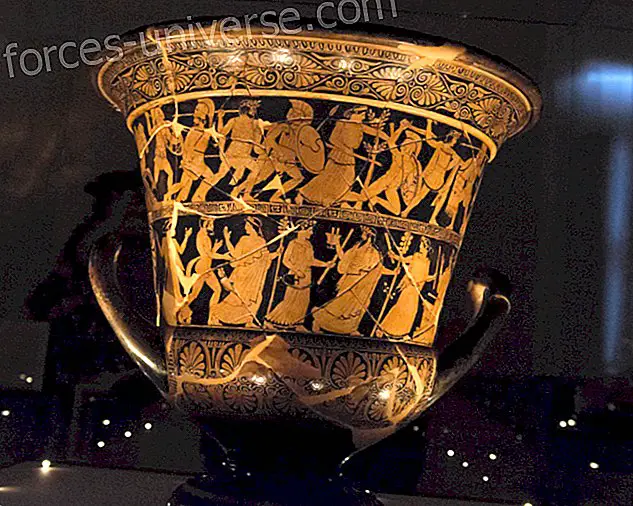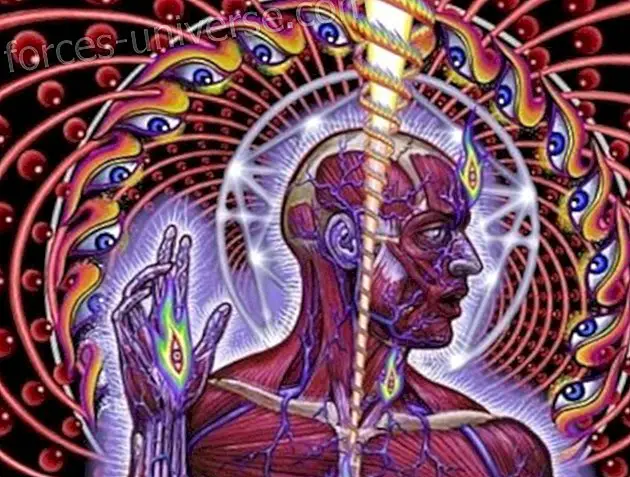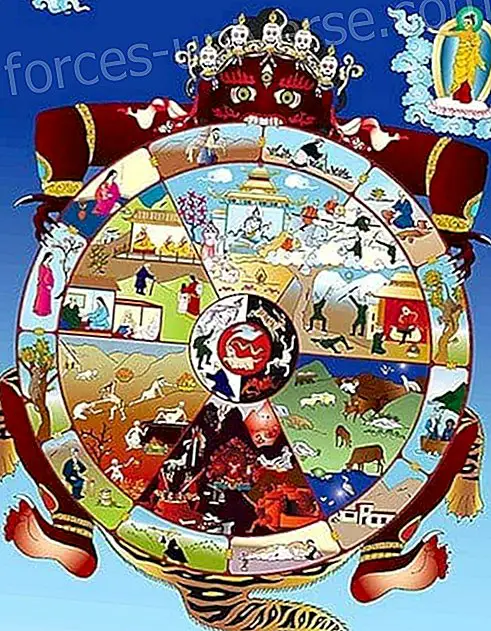
"Knowledge without transformation is not wisdom."
- Paulo Coelho
Throughout the second decade of the twenty-first century, alchemy has not only taken over the field of metal transmutation, but also the shift in consciousness that takes us from the physical to the non-physical world. Reality is nothing but the evolution of consciousness in the alchemy of time and illusions.
And throughout history, alchemy has proven to have a double nature: a chemical and an esoteric.
On the one hand, he has studied the use of various chemical substances in the search for different reactions. It is in fact the precursor of modern chemical sciences.
On the other hand, alchemy has been related to the spiritual philosophy of Hermeticism . This western tradition is based on the writings attributed to Hermes Trismegisto, and was later complemented by Carl Jung's psychological studies.
In this article we will talk a little about alchemy, its history, characteristics and evolution over time.
What is Alchemy
Alchemy is a proto-scientific tradition that has been historically practiced in Europe, Africa and Asia, to spread to the rest of the world. In the history of science, alchemy refers both to an early form of nature research, and to a philosophical and spiritual discipline . In both subjects it stands out for the combination of chemistry, metallurgy, physics, medicine, astrology, mysticism, spiritualism and art. And from all of them, it extracts elements to form a single stream of great strength.
In this way, alchemy is presented to us as an ancient path towards purification and spiritual transformation, the expansion of consciousness and the development of intuition.
It is also characterized by finding its basis in mystery and syncretism, and has a system of esoteric symbols that have the ability to alter consciousness and connect the human soul with the Divine Forces.
A little history
The alchemy tradition dates back to ancient Egyptian culture, in the first advances in chemistry and metallurgy. Egyptian alchemists used their art to carry out different alloys, perfumes and jewelry, and to embalm the dead.
Then it was the Arabs who made great contributions to alchemy. They introduced the numbers to this practice, which allowed carrying the quantities and controlling the times for each process. In fact, it is they who coined the term alchemy (from Arabic al-kīmiyā ).
It is not until the medieval era and the Renaissance that alchemy expands into the western world to be developed by Kabbalists, Rosicrucians, astrologers and other occultists.
Both levels of alchemy, the mundane and the spiritual, always coexisted. The first in the search for the physical conversion of metals such as lead into gold. Although it is clear that it was not ambition that motivated them. The historian Nevill Drury, author of Magic and Sorcery, tells us: ' The alchemists did not recognize all metals as equals in maturity or "perfect." Gold symbolized the greatest development in nature and came to identify human renewal and regeneration . '
Spiritual alchemists lived in the search for purification of themselves, removing the basic material of themselves to reach the gold of Enlightenment. However, during the renaissance, many alchemists began to understand that they had to achieve spiritual purification to achieve the mundane transformation of metals.

The Philosopher's Stone
In alchemy, the idea of a transmutation from one metal to another was reasonable because it was believed that all metals were a combination of four principles : cold, heat, dryness and moisture (hence the four elements were Fire [dry and hot], Earth [dry and cold], Water [cold and cold], and Air [h medo and hot]). Then, rearranging these basic qualities, one could move from one metal to another, by using a dry powder extracted from a mystical stone, the Philosopher's Stone .
Now, from the hermetic point of view, the Philosopher's Stone that was supposed to be the most tangible condensation of the subtle substance, became a metaphor for the internal potential of the spirit and the reason for evolving into a greater state of illumination (symbolized by gold). From this perspective of alchemy, the elevation of the spirit, the transmutation of metals and the purification of the body were conceived as different manifestations of the same concept.
Azoth
The alchemists also searched for a substance they called Azoth . This was believed to be a universal cure (the Paracelsus panacea), and a solvent capable of dissolving any other substance.
In alchemy there are two different currents that explain its name. The occultist Aleister Crowley explains that 'Azoth' arises from the union of the first and last letters of the ancient alphabets. ' A ' represents the A / Alfa / Álef, the first letter of the Latin, Greek and Hebrew alphabets that is itself the same letter. The ' Z ' is the last letter of the Latin alphabet, the ' O ' is for Omega, the last of the Greek alphabet and ' TH ' represents Tav, the last of the Hebrew alphabet. In this way, Azoth symbolically represents diverse things whose origin is the same, which is a characteristic present in all the entities that inhabit the cosmos . Even the ' H ' at the end is said to symbolize the sun, for being the initial of the god Helios.
On the other hand, it is also believed that Azoth is a deformation of medieval Latin azoc, which in turn derived from the Arabic al-zā'būq ' el Mercury '. That would be why the ancient alchemists named that way to mercury.
The Azoth was symbolized by the Caduceus .
Eliphas Levi writes in his book Transcendental Magic : ' Azoth or Universal Medicine is, for the soul, supreme reason and absolute justice; for the mind, mathematical and practical truth; for the body it is quintessence, which results from the combination of gold and light. In the higher or spiritual world, it is the First Matter of the Great Work, the source of the alchemist's enthusiasm and activity. In the intermediate or mental world, it is intelligence and industry. In the lower or material world, it is physical labor . '

The Elixir of Immortality
Alchemy also pursued for many ages and cultures the obtaining of a substance that would allow those who drank it to prolong their life indefinitely.
In the alchemy of ancient China, many emperors were predisposed to find this precious elixir, and the results were variable. Even a failed test caused the death of one of the emperors of the Ming Dynasty .
In India, it was given Amrita's name and according to legend, it could only be found when the ocean reached its peak, as it came from the depths.
In European alchemy, the search for the Elixir of Immortality is closely related to the creation of the Philosopher's Stone . Some alchemists achieved great reputation in this search, such as Nicolas Flamel and Saint German .
The search for this elixir led many alchemists, including Paracelsus, to take the first steps in what would later become the pharmaceutical field.
And this search continues even today, advancing more and more thanks to the new tools that have been developed since the beginning of this tradition.
AUTHOR: Lucas, editor in the great family of HermandadBlanca.org
SOURCES:
- http://www.crystalinks.com/alchemy.html
- https://es.wikipedia.org/wiki/Chrysopoeia
- https://en.wikipedia.org/wiki/Alchemy
- https://es.wikipedia.org/wiki/Alquimia#La_alquimia_como_disciplina_espiritual_y_filos%C3%B3fica
- http://www.crystalinks.com/hermeticism.html
- https://glosarios.servidor-alicante.com/teosofia/azoth
- https://en.wikipedia.org/wiki/Elixir_of_life






